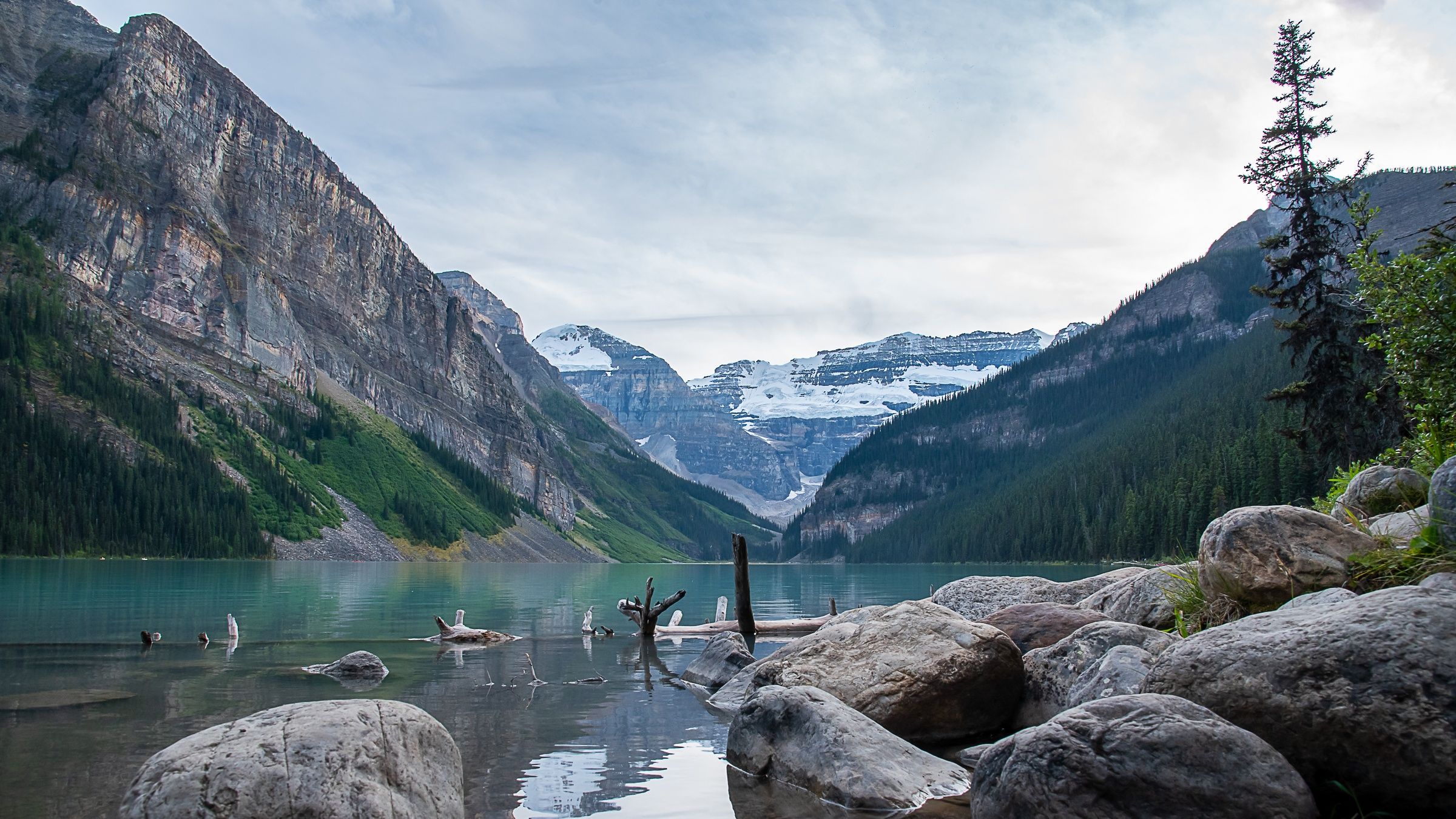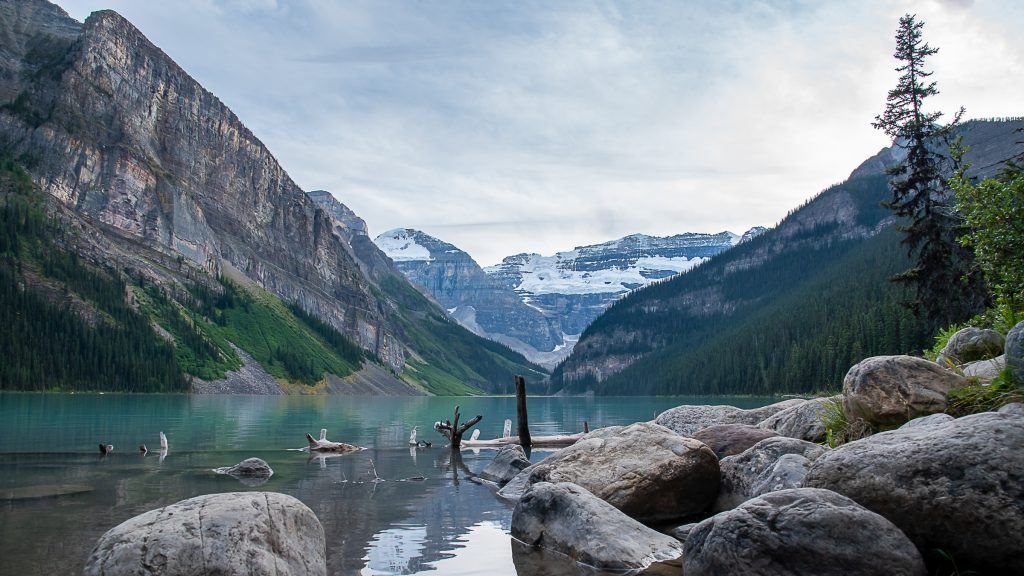I imagine I am not the only one who has arrived home from a vacation to find I have a bunch of snapshots and common images of a popular spot – photos that anyone could have taken.
Have you ever been saddened by the realization that your photos just don’t quite convey the majesty or the grandeur of a place you visited?
It can be quite frustrating to find that the chance to capture some creative, unique images has passed you by.
Vacations are an exciting time for us photographers because they provide the opportunity to capture images that we don’t see every day. Whether it is a large city bustling with activity, a majestic mountain range in all its natural glory, or an oceanside retreat with views of rocks and water, all of these places offer new opportunities to convey a story through images.
However, without a bit of planning and preparation, the wonderful opportunity provided by a holiday can pass us by.
In this article, I am going to share some of my favorite tips for how to capture some creative images while on vacation. You will learn about:
- planning ahead by researching the place you will be visiting, gathering the right equipment, and using lists to guide your photography;
- choosing the best time of day to shoot;
- utilizing people in your photographs to better tell your visual story;
- capturing smaller details while on vacation; and
- ways that you can move beyond snapshots, utilizing some creative techniques.
Recommended Reading: Want to create gorgeous, perfectly lit flower photographs? Grab a copy of Photzy’s premium guide: Photographing Fabulous Flowers.
Do Your Research
Before you start packing for your trip, particularly if it is somewhere you have never ventured before, it pays to do a little bit of research. The research you do can help you when you arrive at your destination, and it can also help you decide what to bring, as far as your photography equipment goes.
One of my favorite things to do before I visit a new place is to look for images of where I am going online. Like most photographers, I don’t want to return with photographs that everyone who visits a place might capture. I want something different from the typical images one might see. Looking at images online gets me thinking about ways I might photograph the popular spots in a new way.
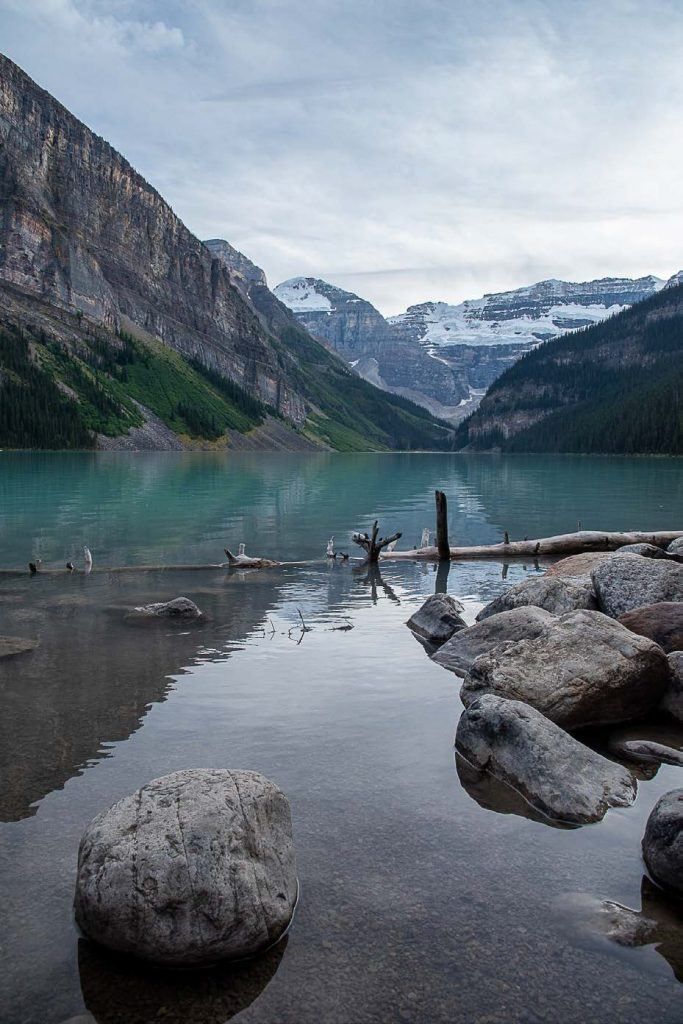
Before leaving on a recent trip that included a visit to Lake Louise, Banff, one of Canada’s most photographed sights, I looked at other images and thought about what I wanted to take away from my visit. I had some ideas in mind before I even got there, and that guided my composition and treatment of the subject in this image. Photo by Leanne Cleaveley
Whether you are visiting the beach, the mountains, or sightseeing in a new city, you want your images to be unique from the ones that most people capture. Go for a virtual walk through places you will be visiting. Check out other people’s images. And then start thinking about what you might do to add your own style to the images you are going to capture.
Your planning might involve leaving enough time to capture a scene from a new or unusual angle. It might be to go to a spot at a different time of day than is typical. You might think about using a particular style, such as silhouettes, or long exposures, to create a unique image. This part is pretty personal as everyone has things that set their photography apart from other people’s work.
If you are the type of person that likes making lists, you might even write down some of your goals for what you want to capture and how you will do that. Wedding photographers often have a checklist of “can’t miss” photos. Create your own vacation list and keep it handy in your camera bag or on a mobile device.
Be sure to pack the things you need for those shots as well. I love macro photography and always plan to pack my lens and capture a few close-ups of the things I see. If I am planning to do any long exposure shots or landscape shots, I know I will need my tripod and pack accordingly.
Key Lesson: Be sure to take all of the equipment you will need on your vacation. Thinking about what you will be shooting (and how) can guide you when packing for your trip.
Time
Time is one of the number factors for my vacation photographs. The time of day that you shoot can influence your photographs in a big way.
The amazing golden tones of early morning and late evening are worth planning for. If your schedule allows, try to be in the places you want to photograph during those times.
Time is one of the number factors for my vacation photographs. The time of day that you shoot can influence your photographs in a big way.
The other advantage to shooting at either the beginning or end of the day is that if you are shooting in a popular vacation spot you will find it is less crowded. This means that you won’t have to wait to find that great spot you wanted to shoot from, and you can avoid having other photographers in your shot.
Key Lesson: Choosing the right time of day can help you take advantage of the best light and avoid the crowds. Early or late in the day are the prime times for photographers.
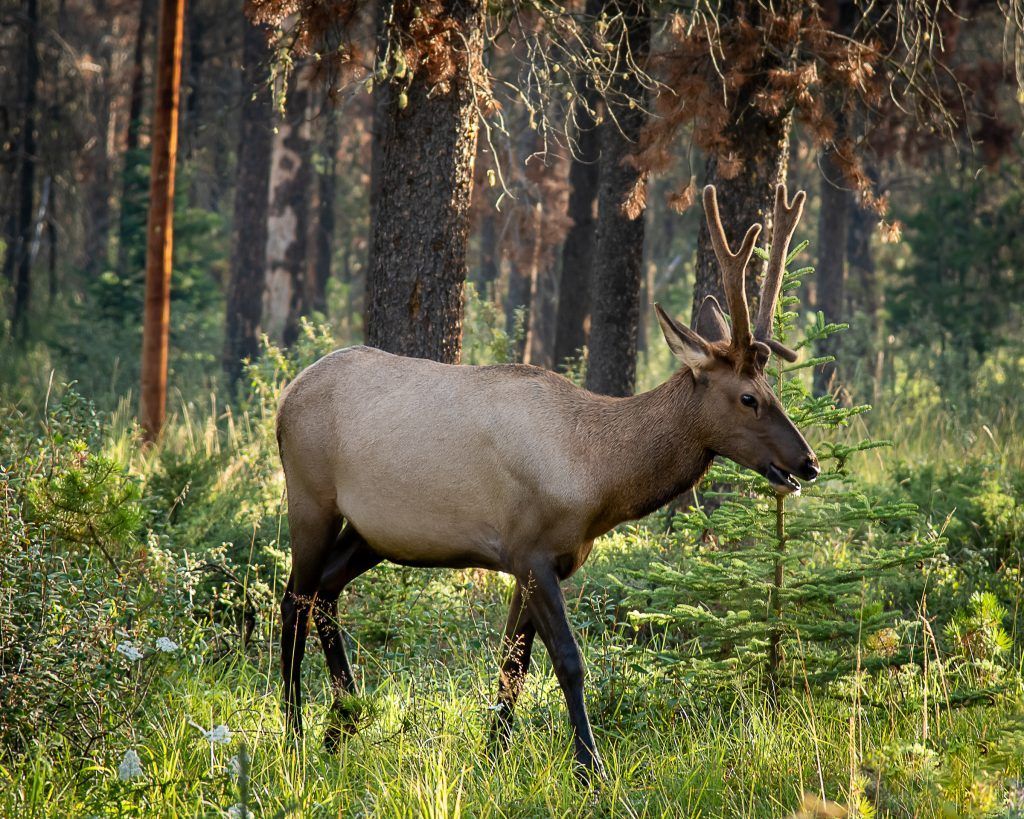
Photo by Leanne Cleaveley
Shooting at midday, you not only run the risk of harsh light that leaves your photos looking rather flat, but you also must contend with the crowds and won’t have the luxury of taking your time to capture that image you envisioned.
If you are vacationing in nature, the bookend times of the day are typically better for spotting wildlife as well. The image of a bull elk above was taken in the morning. The position of the sun allowed for some nice backlighting of the bull’s fuzzy antlers.
Remember the Human Element
Unless your vacation involves camping solo in the backwoods, people are part of the scenery at any place you visit. You can use the ways suggested above to avoid crowds and capture the scenery without the human element, or you can make a conscious effort to include people in your photos.
Using a person to steer your viewer’s eyes through a scene is a great way to utilize people in shots. Find a person who is looking at or photographing the thing you are and place them in your image so that they act as a guide for where to look in the scene.
Including people in a scene is a great way to show the scale of a place. A photograph devoid of anything to compare makes it tricky to tell how large your subject is. Include a person and it becomes clear how big or small your subject is.
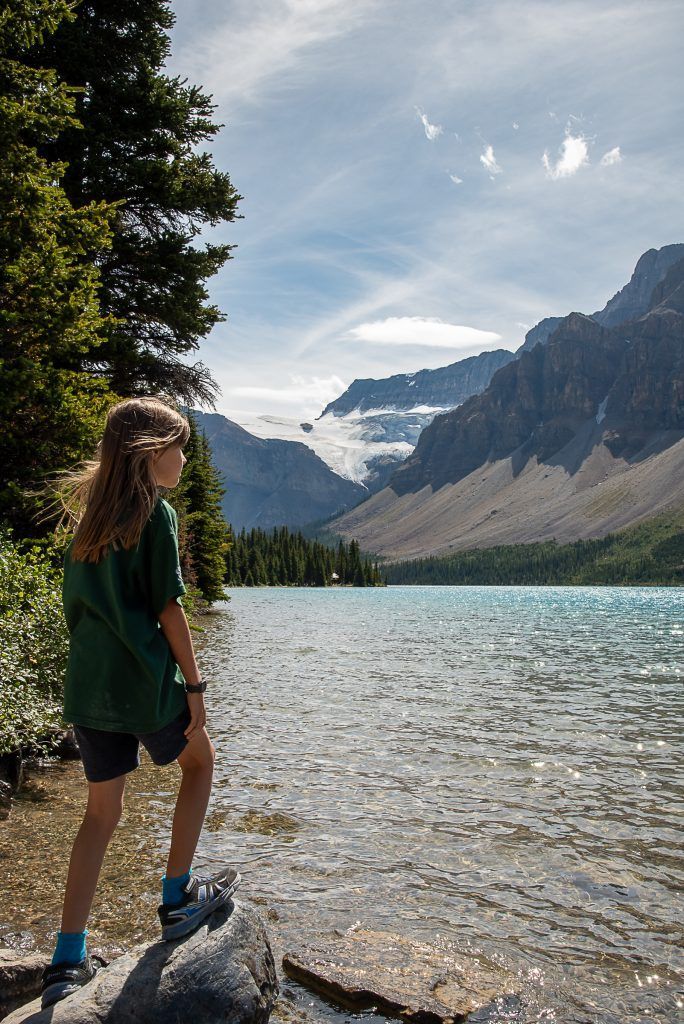
Photo by Leanne Cleaveley
People help you to better tell the story of a place. How people live and what they do are an important part of what a place is like. Be sure to capture some of the locals or the tourists, going about their day, as it better shows what life is truly like in that place.
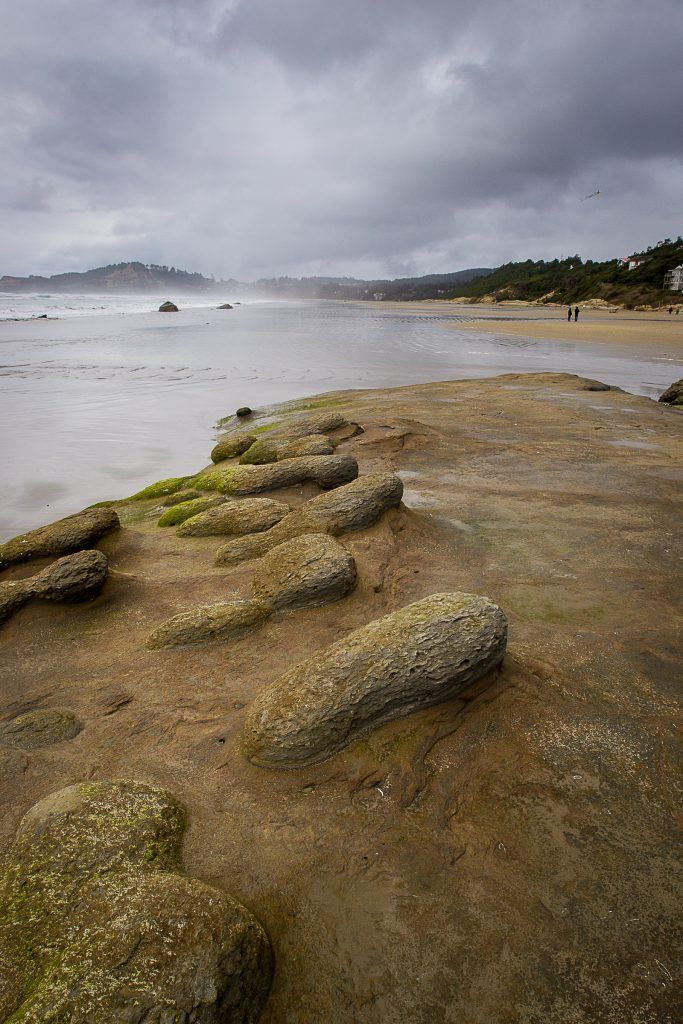
The people flying a kite in the far right of this image provide scale and a sense of depth for this broad stretch of beach. Without them, it would be difficult to grasp the size of the beach and rocks. Photo by Leanne Cleaveley
Don’t forget to capture your friends and family! It is hard to pass up on those planned snapshots and selfies where you stand in front of a well-known landmark and say cheese, but try and catch them exploring or participating in activities for a more interesting image.
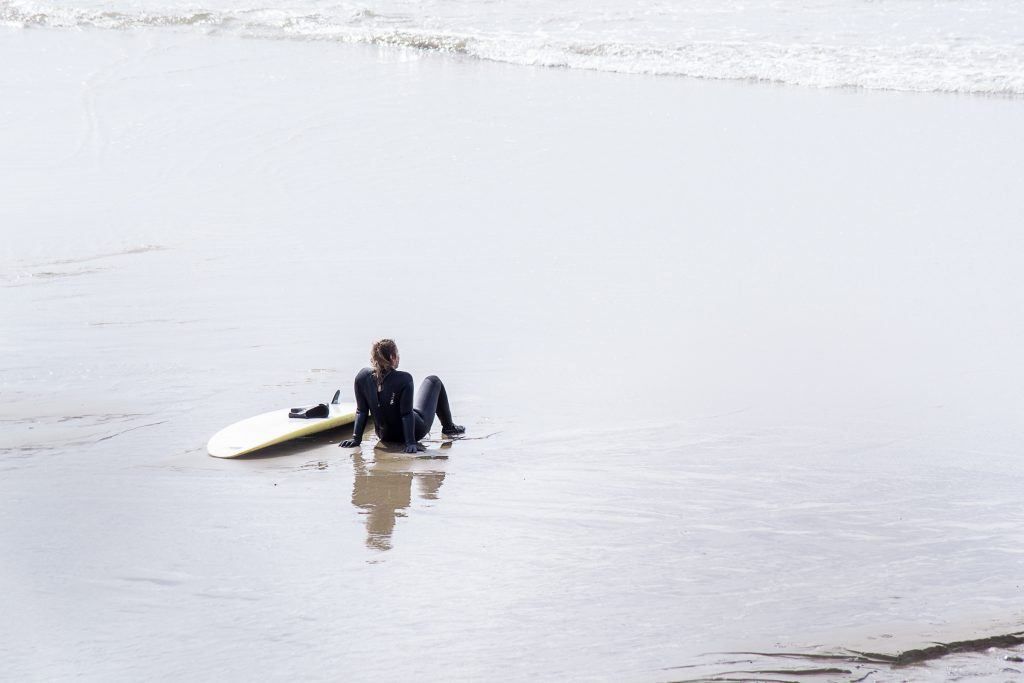
Photo by Leanne Cleaveley
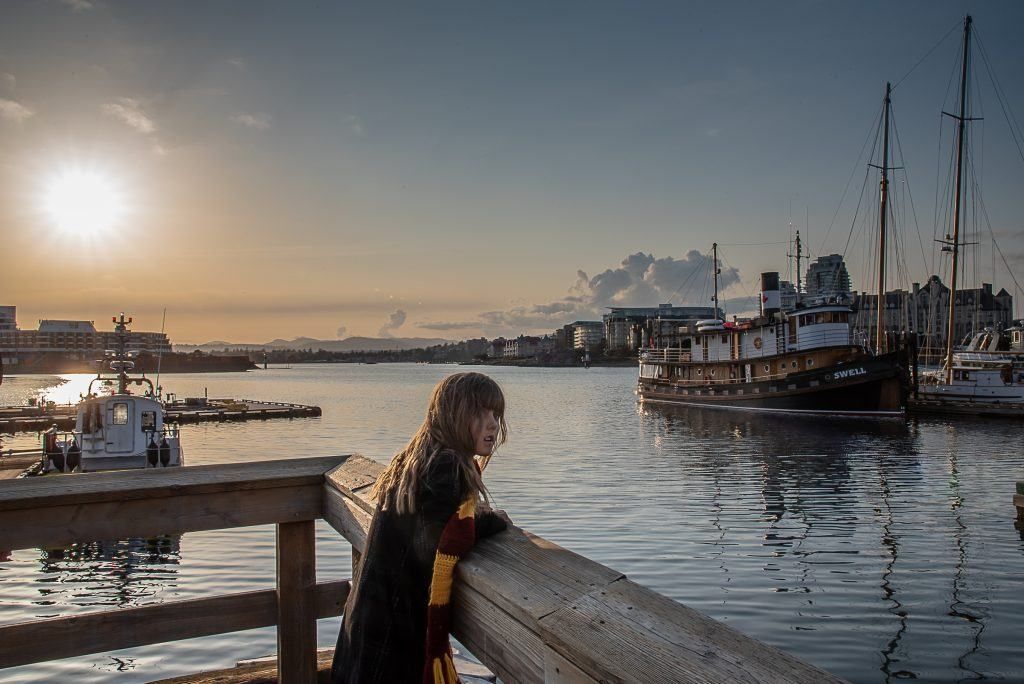
This image of my daughter was taken at the end of a long day after attending a cosplay event. She kept her Hermione costume on as we toured around the harbor and I seized an opportunity to capture her exploring, rather than have her pose. The resulting image is more interesting than the traditional vacation snapshot. Photo by Leanne Cleaveley
Capture the Details
We often get caught up in the big picture, but don’t forget the smaller details when on vacation. These are the things that you will appreciate later. Capture that majestic sweep of beach but take some time to catch some of the smaller subjects like the seashells and pebbles on the sand.
I always keep my macro lens in my bag, even when visiting locales known for their grand vistas. Putting that lens on my camera is my way of shifting the way that I look at things. It helps me to zoom in on some of the treasures that I might otherwise miss.
You don’t need a macro lens to shoot close-up shots, but you should try and find a way to remind yourself to look for those smaller details that can be an important part of your vacation story.

This image of a door in a city that we visited on a vacation tells the story of the people who lived there for manay years and leads me to ask all sorts of questions about their lives. Photo by Leanne Cleaveley
On a recent trip, we visited some viewpoints known for their amazing panoramas of nearby mountains. After capturing some images of the scenery, I popped my macro lens on. The mountain meadows were full of flowers and I soon realized that many of the flowers had bumble bees “snoozing” in them. This would have been an opportunity missed if I wasn’t paying attention to the details.
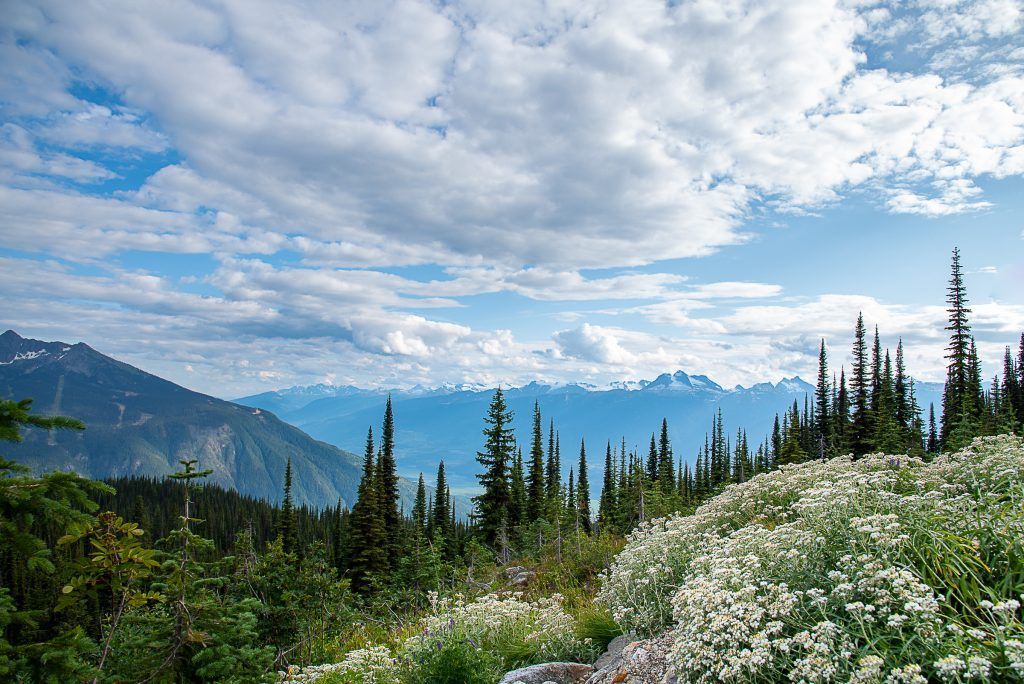
This image of a mountain vista shows the big picture, while the bumble bee image (below) captures an important detail from our walk in the forest on this particular trip. Photo by Leanne Cleaveley
Sometimes the best way to tell the story or convey the mood of a place is to zoom in on a detail. Street signs, the texture of the rocks on a beach, or an unusual meal or a plant are just some of the things you might choose to photograph. Don’t forget to look around you for some smaller, hidden treasures.
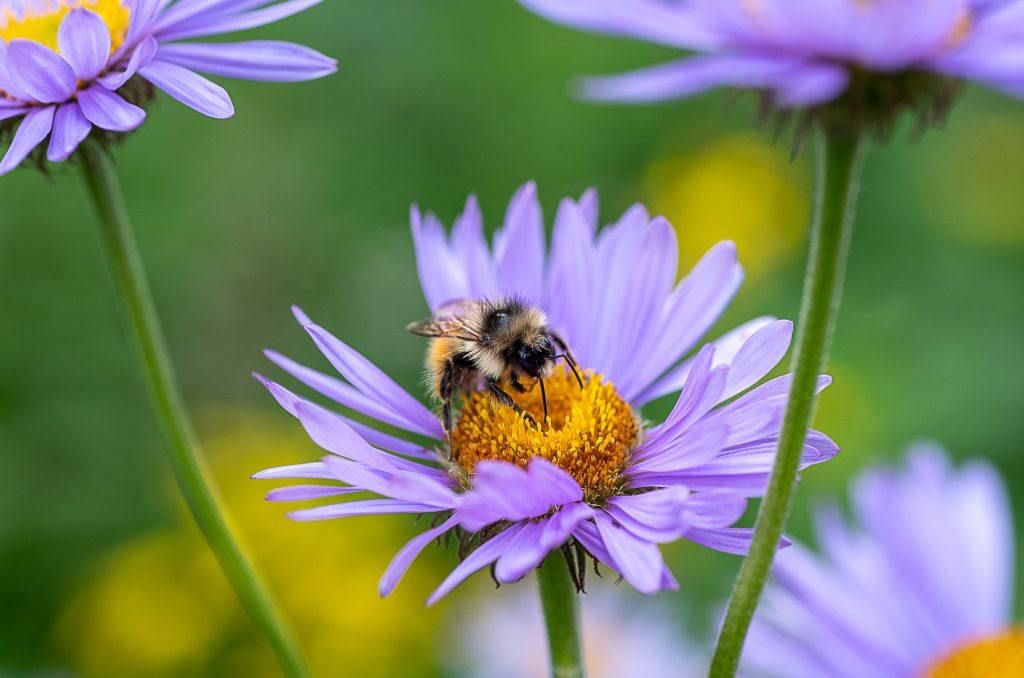
Photo by Leanne Cleaveley
Go Beyond Snapshots
As I said earlier, there is nothing wrong with wanting to capture some snapshots of your family and friends when on vacation. But moving beyond snapshots, I have a few suggestions to capture some images that will really stand out and make you say, “That would look great on my wall.”
Long Exposure
Long exposure shots are sometimes a necessity due to low light, but they can also be utilized to create something quite unique and interesting. When shooting around water, lengthening your exposure time can smooth the action and create a very different scene from what you are seeing with your eyes. Choppy waves become silky smooth and milky looking.
This image of a lighthouse and the surrounding ocean was taken on a very blustery evening. The wave action, when captured with a longer exposure (four seconds), became misty and smooth, adding moodiness to the photo. The long exposure also allowed me to capture the beam from the lighthouse and expose the scene adequately.
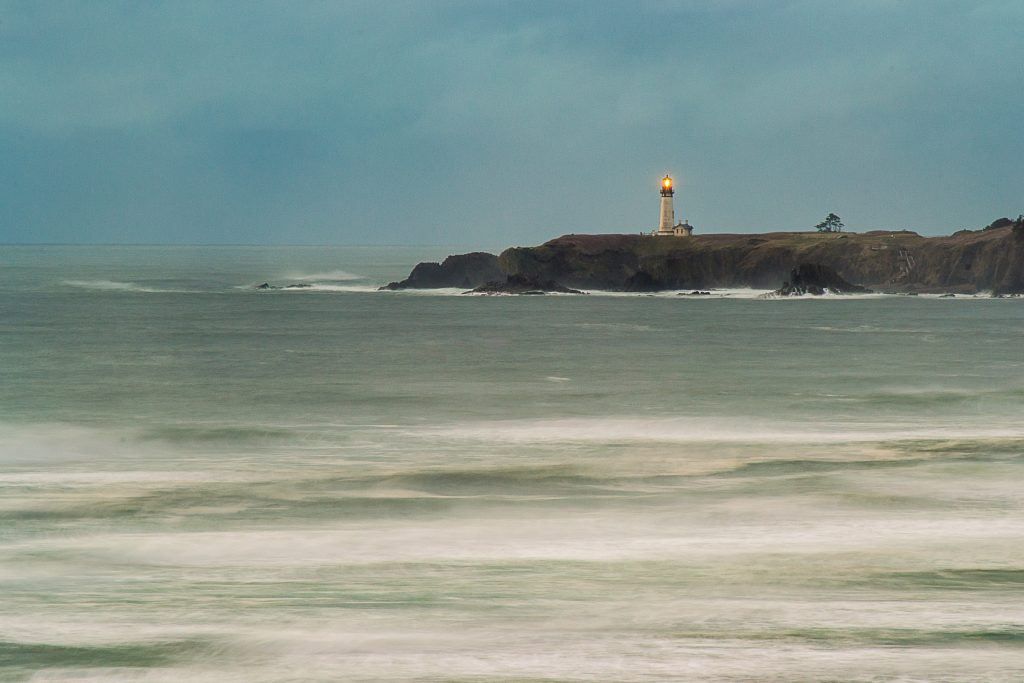
Photo by Leanne Cleaveley
The key ingredients for shooting long exposure shots are a tripod and low light. The tripod is needed to stabilize your camera so that you don’t end up blurring stationary objects in your photograph. Low light is necessary, as you don’t want your shot to be overexposed. Alternatively, you can use a neutral density filter to prevent too much light from reaching your sensor.
The key ingredients for shooting long exposure shots are a tripod and low light.
You can set your aperture to a higher f-stop (a narrower aperture and therefore greater depth of field) as well. Again, this allows for less light and a longer exposure time.
How long depends on the effect you want to achieve. This will depend on other factors such as the action of the water you are shooting, how light it is outside, and how smooth you want the water to appear. I recommend starting at a shorter exposure time (three or four seconds) and working your way up to see the effect.
Don’t forget to adjust your aperture (f-stop) and ISO to compensate for how long the shutter is open. Shorter exposure times will need a wider aperture or higher ISO. Longer exposures will need a narrower aperture and a lower ISO.
Key Lesson: When shooting long exposure, you need to keep ISO and aperture in mind. As you increase the shutter speed you will need to stop down (or increase your f-stop) accordingly. You can also adjust the ISO up and down accordingly.
Recommended Reading: Want to create gorgeous, perfectly lit flower photographs? Grab a copy of Photzy’s premium guide: Photographing Fabulous Flowers.
Intentional Camera Movement
Intentional Camera Movement, or ICM, is another great way to capture a unique image from your vacation. ICM shots are created using a long exposure and moving your camera. What shutter speed you use and how you move your camera will have an effect on your final image.
You will be using a longer shutter speed, so the factors that I mentioned above such as shooting in low light (or using a filter), increasing your f-stop, and adjusting your ISO are all important. However, you don’t necessarily need a tripod for this style of photography.
Images shot using ICM are more abstract, so you want to look for a scene that has some contrast in color or tone. Textures are also interesting in ICM images. Like the water in long-exposure images, subjects will become smoothed out and soft.
You don’t need to have your shutter open for very long to achieve an ICM photo. One or two seconds and a sweep of your camera across the scene can create amazing results. I do recommend that you start out small and build up to longer exposures and more elaborate movements.

This image was shot at 1.6 seconds while sweeping my camera left to right. ICM turned a normal ocean scene with waves and a post-sunset sky into a tranquil-feeling image that is abstract in nature. Photo by Leanne Cleaveley
Silhouettes
One final technique that I would like to share with you is the use of silhouettes. I like using silhouettes for subjects that are common or have interesting shapes. They are great for photographing landmarks in a different way.
Time of day is important for this technique, as you need to have the sunlight placed behind your subject. You also need to set your exposure for the brightest part of your image, not your subject. You can do this manually or by using spot metering and selecting a bright spot before recomposing your image. I chose to shoot the hoodoos in this image using silhouette. They are well known and photographed often, so I wanted to capture them in a way that I hadn’t really seen before. Their unusual shape and the placement of the sun behind them allowed for a unique image with interest.
Fun Tip – If you want to create the starburst effect as in this image, set your aperture as high as it will go. This image was shot using f22 and 1/320sec.
Long exposure, intentional camera movement, and silhouette are just a few strategies you can use to capture some creative vacation shots. Don’t be afraid to play and try out something new.
I hope your next vacation has you returning home with unique photographs that have captured the story of where you have been. Happy shooting, and have fun!
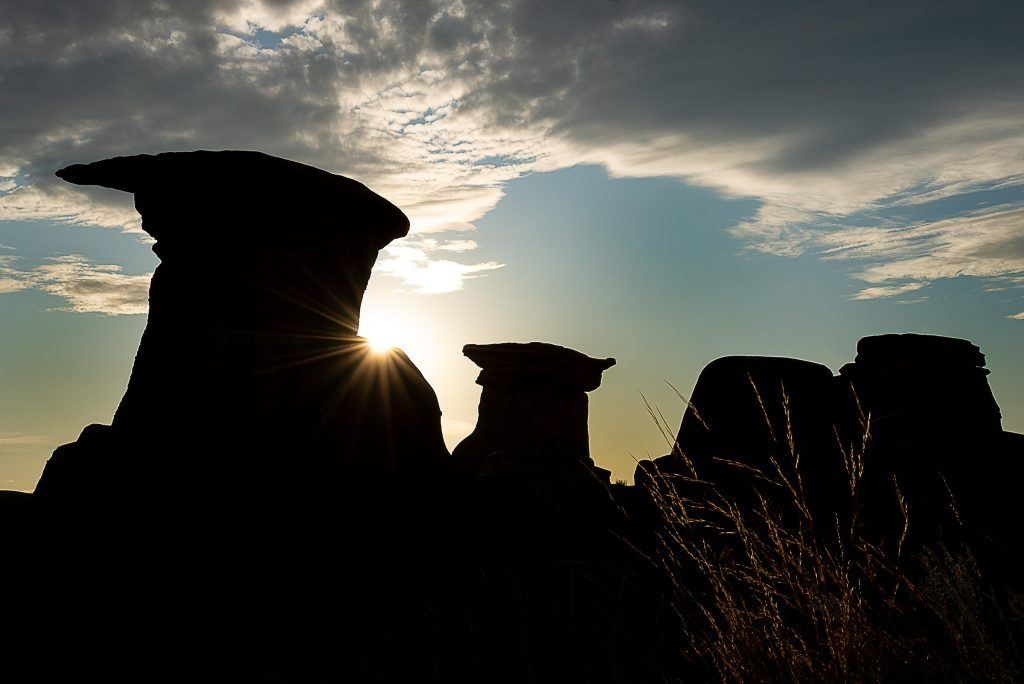
Photo by Leanne Cleaveley
Self-Check Quiz:
- What are two key advantages to shooting early or late in the day as opposed to midday?
- In what ways can including people in your images add to the overall effect of a photograph?
- A great way to tell the story of a place is to zoom in on the ____________.
- What are two key ingredients for shooting long exposure shots?
- True or false: You must have a tripod to shoot ICM.
- When shooting ICM, you want to look for a scene that has ____________ tones or colors.
- A technique that can be utilized to show common landmarks in a unique way is ______________________.
- Choose one: To create a starburst effect, set your aperture as high/low as it will go.


